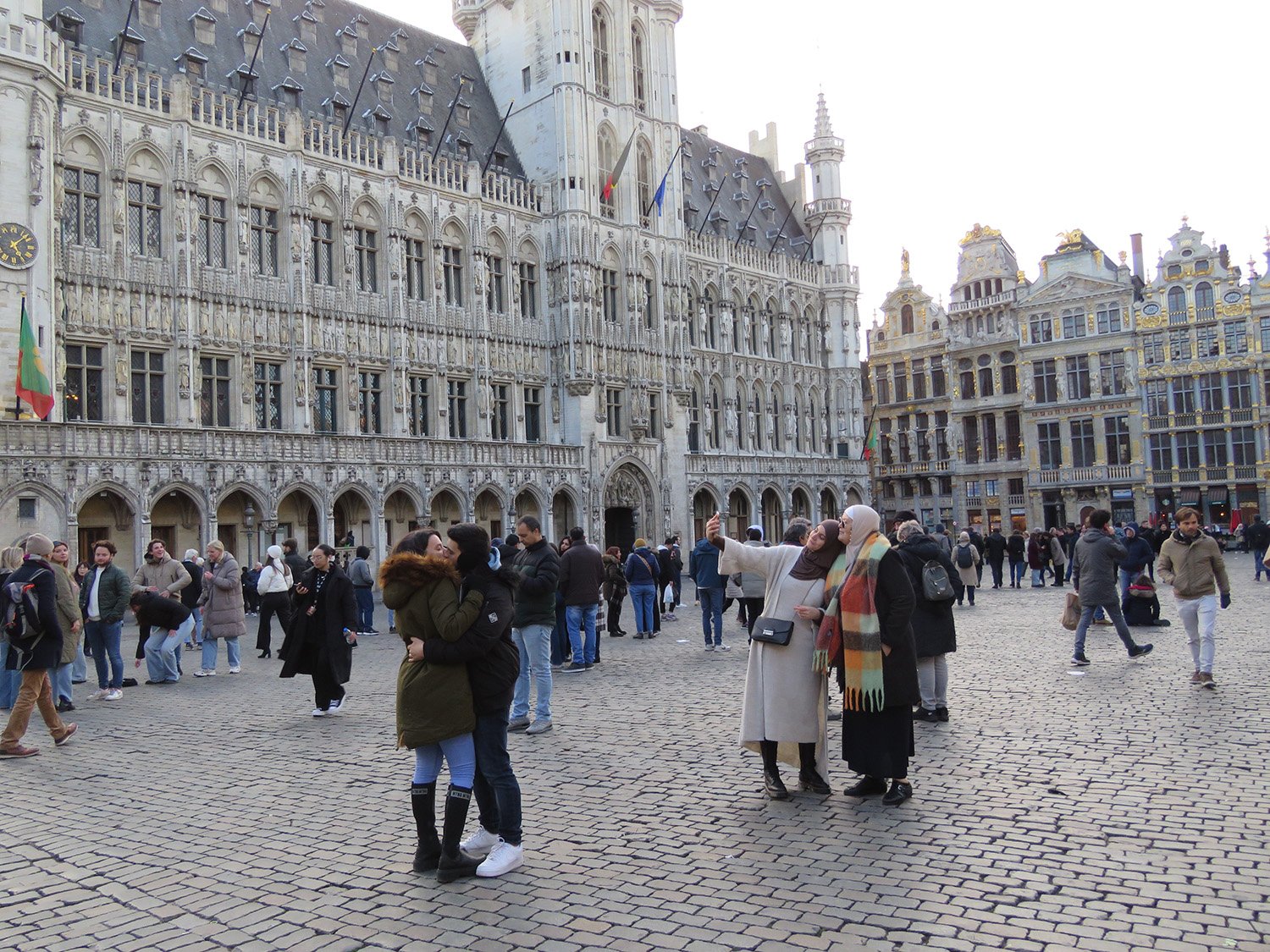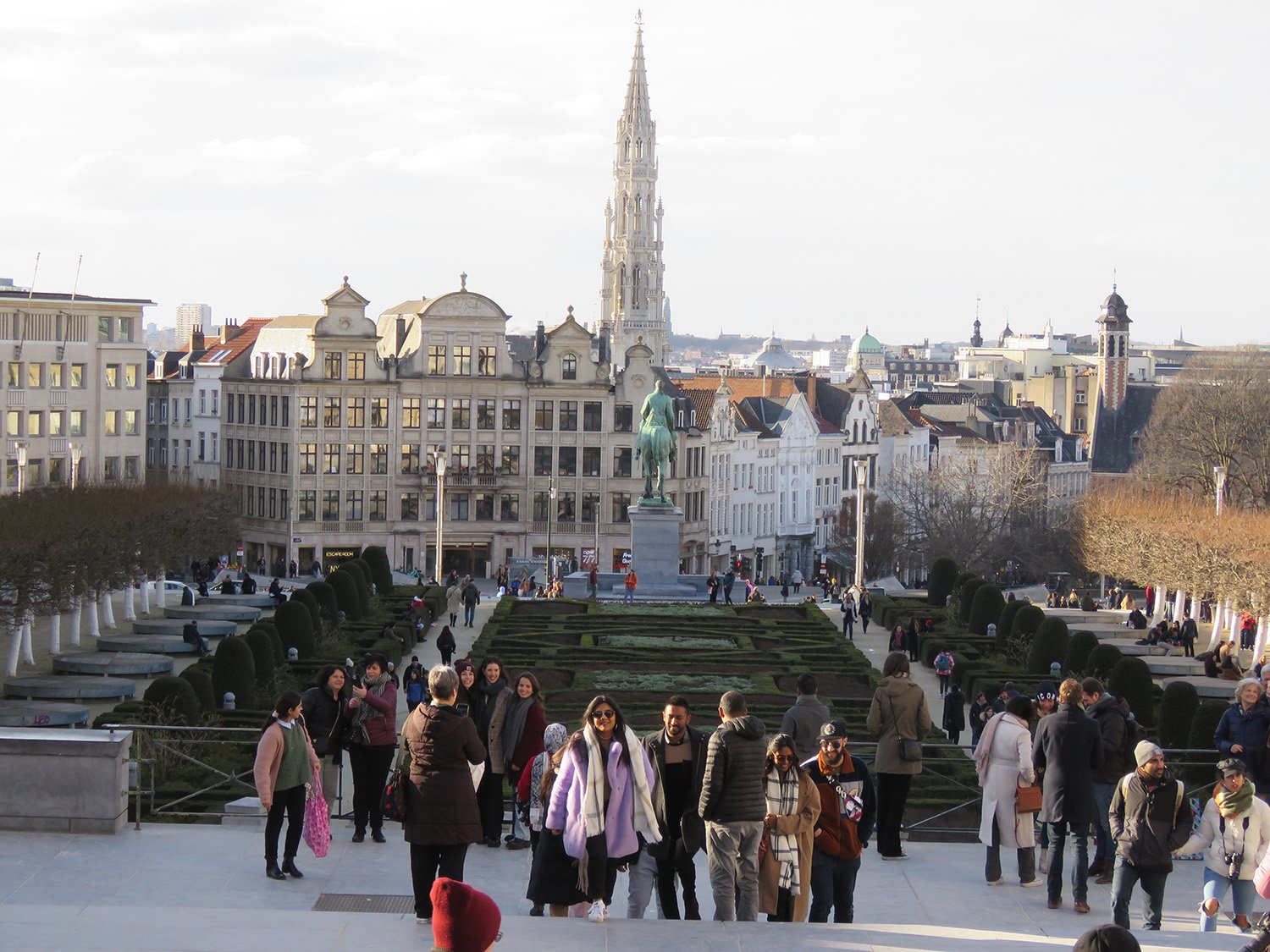Brussels, It Sprouts on You
/A convergence of the old and modern in the bustling city of Brussels. (Photo by Criselda Yabes)
Charleville-Mezieres’ claim to fame is the late 19th century rebel poet Arthur Rimbaud – you see his young gorgeous face everywhere, his eyes dreamy, his hair tousled in a funk – who broke the glass ceiling of traditional poetry. His house was by the river, now a museum, about two blocks from where I live.
But those who know better are aware of the historical fact that Rimbaud was perpetually running away from his hometown, often sneaking onto a train for Paris and getting caught. Although his house was a short walk from the Place Ducale, the cobbled square around which life revolved (it still does), there’s not much else to be excited about the town, except if you love hiking in the region’s verdant forest.
Because we usually take our respite in Paris for at least one weekend each month, we decided to see what’s in Brussels instead for a weekend of pleasant sun in mid-March, after a long winter. It had snowed just a few days before, and when the weather suddenly had a change of heart, we went for it.
For one lovely Saturday afternoon, we walked around Brussels, quietly pacing our steps despite a steady influx of tourists. My ears were thrilled with the sound of different languages, not only French – which is also Belgium’s mother tongue. Lots of English, some Spanish, German, Arabic and perhaps sounds from the Baltics.
Brussels was our town square writ large, all cobbled streets made pedestrian, far from road traffic. In Brussels, there’s the Grand Place, the big plaza, and you can’t miss it. You don’t go to Brussels without seeing the Grand Place, which is surrounded by magnificent buildings of ancient times. I was beginning to see the fascinating mix of architecture in this city.
You will see the world in Brussels’ famous Grand Place. You can't miss it (Photo by Criselda Yabes).
I used to think of Brussels as a mini version of Paris, but now, saying that might be somewhat insulting for the Belgians. Certainly, they’re plus cool than the Parisians, and much more bilingual. You feel the weight of stress unloaded from the French side of the border.
We saw art deco and classical, gothic, and Germanic glass buildings hovered over gilded domes. The architecture didn’t seem to be at odds with each other, however. They mingled and stood in harmony. I could imagine walking down the steps onto a manicured garden, like being at the Musee de l’Homme overlooking the Eiffel Tower, but it’s not; and suddenly you see a block that reminds you of the ministry of finance, but you know this isn’t Paris.
You see the golden dome of the Palais de Justice (currently under repair) here and there, from the narrow streets of Belgium's capital (Photo by Criselda Yabes).
You might think you're in Paris, something similar to the Musee de l'Homme overlooking the Eiffel Tower -- but that tower right there will tell you where the Grand Place is (Photo by Criselda Yabes).
The park, for example, is nowhere near the Tuileries of Paris, but it’s fun to see a length of bronze statues depicting a famous comic book character, Le Chat/The Cat. Belgium is big on bande dessinee, or comics, for which there’s a museum of what the Belgians have created in their minds. Many of the street murals are copied from comic books, so that you might see a building wall as if cut out from a comic book page.
Comic book murals are the signature of Brussels’ street art, paying homage to the Belgians' bande dessinee. (Photo by Criselda Yabes)
The museums tend to congregate in one place, but on a sunny day I didn’t want to be indoors. In Paris exhibits were always full, and dates booked online took away the fun of a spontaneous visit. When I had no chance of seeing Frida Kahlo’s things at the Palais Galliera, I consoled myself with a theater play held in the border town of Givet, where Belgians often go when making their foray into France.
The minute we checked into our hotel, we made our way to rue Haute for lunch at a vegan restaurant that promised Taiwan-inspired street food, called Liu Lin. We were surprised to see it full and turning away customers that came after 2.30 in the afternoon. We stuffed ourselves with a noodle bowl worth 17 euros each, giving us the energy to walk for about ten kilometers in and around the Grand Place.
Any street sign that has the word marché (market in French) on it is a good bet: there’s much to see in artisanal boutiques – like Brussel’s architecture, they can make the old look new and the new look vintage. Tourists lined up at the boulangeries as well, something I didn’t do because it was too recognizably French. (Despite the few things to see in my small town Charleville, it has an excellent bakery with pastries to die for, a saving grace.)
Modern architecture does not hesitate to stand beside the old churches. (Photo by Criselda Yabes)
Sunday morning was a walk to St. Catherine’s cathedral a block from the hotel. We lit our candles and said our little prayers, and then went hunting for sinful cheesecake! The line was unbelievably long at Chicago café on the street by the side of the church. We had no choice but to go back up to rue Haute, to a café called Lucifer Lives. It was packed crazy, but easy to order a vegan Oreo cheesecake with cappuccino.
What were we seeing in Brussels? That vegan cafes and restaurants were the trend, perhaps way ahead of Paris. (For smoothies and vegan waffles, you must go to The Sister Brussels Café near the Grand Place). And it’s not just for the tourists. The typical brasseries were nearly empty, but there were other adventurous restaurants of Middle Eastern or Asian cuisines.
Before leaving, it was just as well to sin by lining up for half an hour at the Friterie truck stand for a huge cone of French fries (which is originally Belgian, by the way) for 3.60 euros; and at another food van for gauffre, the ultimate Belgian waffle that is a thousand times more delicious than the one at the Place Ducale in my town for the same price of 2.50 euros. After all walking and the munching, you can’t leave Belgium without having a taste of the real thing.
The iconic van selling the best Belgian waffle. (Photo by Criselda Yabes)
Criselda Yabes is a writer and journalist based in Manila. Her most recent books include Crying Mountain (Penguin SEA) on the 1970s rebellion in Mindanao and Broken Islands (Ateneo de Manila University Press) set in the Visayas in the aftermath of Typhoon Haiyan.
More articles from Criselda Yabes











